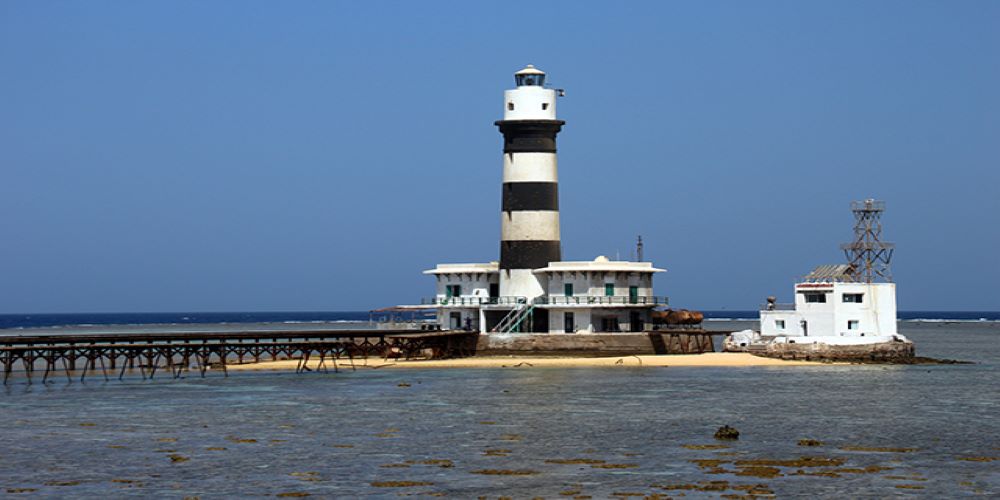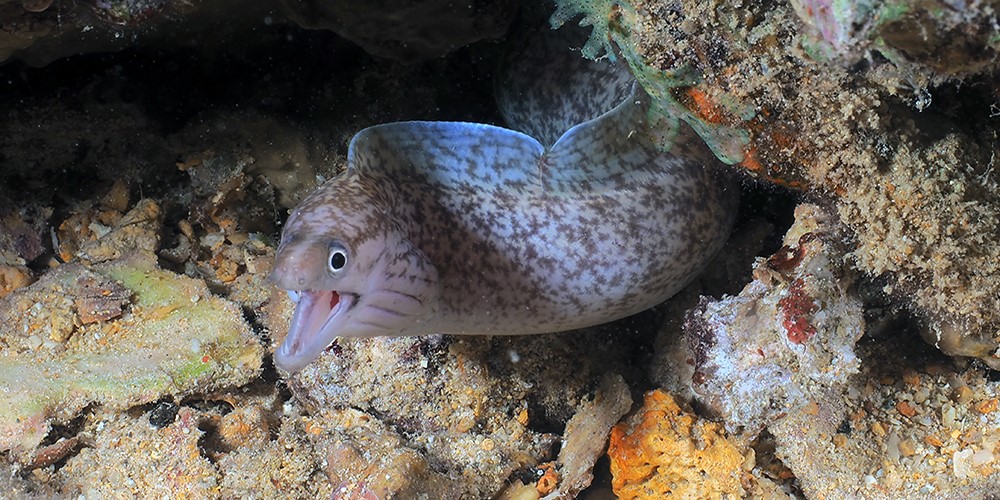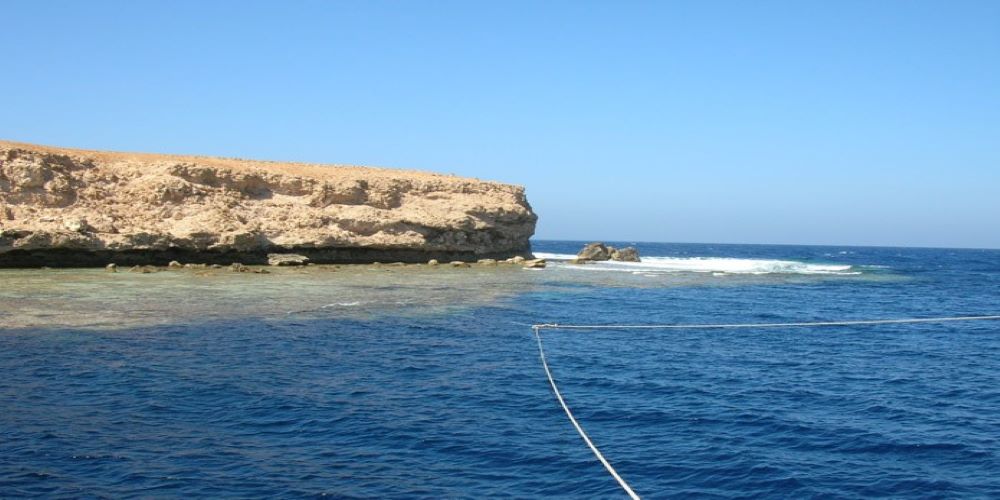Expect to see
Daedalus
With a length of 600 to 750m and a width of 100m in the north and 300m in the south, Daedalus is a very large reef. In the south there is a lighthouse that guides the ships at night. Here you can shop, stretch your feet or climb the lighthouse. On the north side there is a steep wall, which towards the east on a depth between 18 and 40m changes into several lagoon like plateaus. There in the blue water you can find the hammerhead sharks. Usually, depending on the current, several groups of 12 to 25 animals each can be found.
Almost all boats anchored at Daedalus will send their Zodiacs north in the early morning hours. The best place to go in the water is at the northwest corner.
It is worth - always in sight of the reef - to dive a bit into the blue water and just wait at 20 or 25 meters depth. If there is nothing to be seen, dive calmly at the same depth in southeast direction around the reef top. On the east side there are two lagoons, near which the hammerhead sharks usually come out of the depth. At the first moment you will usually see only one animal. It will dive past you at some distance and lie down on its side to show its strength. Stay where you are. Do not go deeper or follow the shark - it will disappear into the depths. However, if you have waited patiently, the other animals in the group will come out of the depths and attempt to get close to you. If you get too close to them, they will dive away. But if you stay where you are, or even ascend a few meters - yes, yes, the NDL time - the animals will usually follow. Then you have the opportunity to enjoy this spectacle for up to 20 minutes.
Nearby is also the so called "Manta Point" with its colorful reef wall. The whole east side is a first class spot. You should always look below you into the depth or into the blue water - there will always be big hunters in sight.
The west side with its notches is home to one of the largest anemone colonies in the Red Sea. More than 200, with their red outer shell and delicate yellow to greenish coloring, have attached themselves to the reef on a width of just 10 meters in the narrowest of spaces. This colony reaches down to a depth of more than 50m. But further south it finally takes your breath away. There sits a gigantic hard coral, at whose sight one feels tiny: Like a waterfall it falls down from 4 to 19m. Unfortunately, the first damages are already visible.
In the south of Daedalus there is a plateau with big and small boulders - a good place for the thresher shark. Nearby is rubble and steel from the lighthouse. Moray eels and groupers slumber in it. You can also find turtles, gray reef sharks, hunting mackerel and tuna, and of course stonefish and snails.
At the southern drop-off edge of the plateau you can find a small colony of anemones. The special thing about it is the coexistence of different colored species in a small area. In the upper area one often encounters deep sea sharks, such as the Oceanic white tip shark and the silky shark.
Daedalus is also an outer reef and marine park. Apart from the general regulations, anyone going diving here should be able to cope with changing, sometimes strong currents, high waves and Zodiacs. In addition, a deep dive specialty is recommended.
Zabargad
Zabargad has two shipwrecks to offer, both in the sport diver friendly area. On the east side, between 1 - 24 meters deep, you will find a wreck 70 meters long and about 10 meters wide, the name and history of which have long been the subject of speculation. It is assumed that it is a Russian motor freighter that sought the protection of the island after a collision or explosion on board and sank there - the damage in the stern area would speak for this. The vegetation of the wreck suggests a sinking period in the 1950s to -60s.
On the southeast side, there are many cave passages in the upper reef area where, if you are lucky, you can find nudibranchs and turbellaria. On the west side of Zabargad, besides beautiful hard coral gardens, you can dive the remains of the safari ship "Neptuna", which sank here in 1981. On the sandy bottom at a depth of 24 meters you can find evidence of the sinking: a generator, several suitcases, a radar unit and a diving tank. However, there is no trace of the wreck of the ship. Since the reef is only slowly steepening at this point, the safari boat cannot have slipped any further into the depths, so it must be lying somewhere nearby. Presumably, at that time, when the stern was already submerged, it drifted a little further, while the mentioned objects fell overboard. The wreck of the "Neptuna" could not be located until today and thus remains one of those mysteries with which the Red Sea can still come up with.
Safari boats usually seek shelter to anchor on the south side of the island - behind a large lagoon. Around the lagoon, which is about 10-12 meters deep, it descends steeply to depths of over 50 meters. You can reach the inside of the lagoon through numerous passages through the rock that rises around the lagoon and is lush with colorful soft corals.
Rocky Island
The island has an extension of 300m by 80m and has a fringing reef all around.
The south side of the reef consists of overhangs and half caves where very often white tip reef sharks sleep. Even more, the east and west are real Shark Points, because here the sharks are in a current that comes from the north and also brings in huge schools of sardines and their predator, the tunas.
The north, on the other hand, is a deeply indented steep wall with ledges and overhangs. Here one sometimes encounters dolphins.
Around Rocky Island again marine park rules apply and due to various currents it is a very challenging reef.
Itinerary
xx

 ENGLISH
ENGLISH
 РУССКИЙ
РУССКИЙ
 DEUTSCH
DEUTSCH



